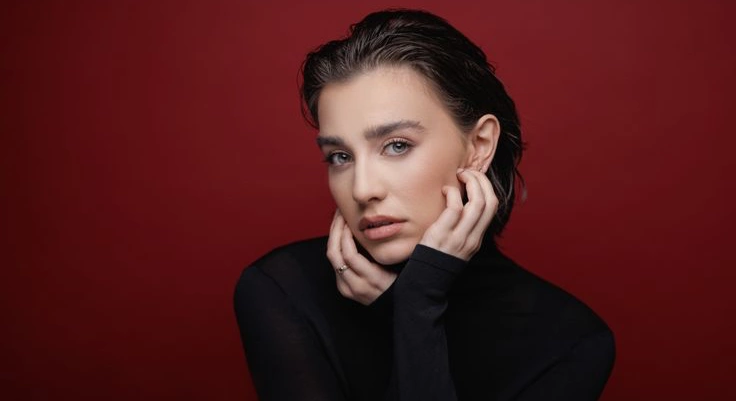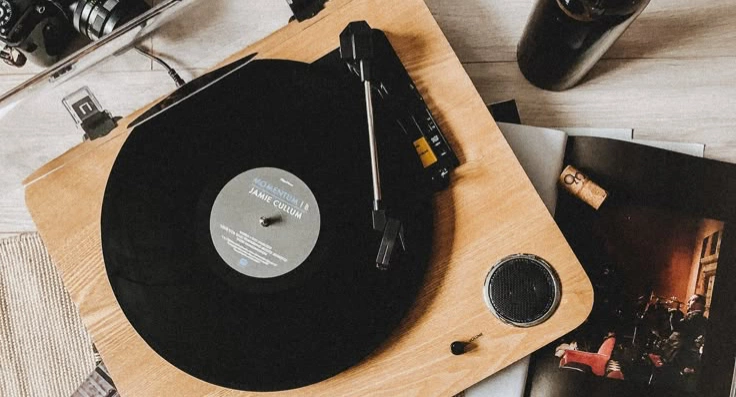Classical Posts on Crowch
Georgia has always been a country where music is deeply woven into national identity, and once again this spirit was brought to life on the Eurovision stage. In 2025, Georgia was represented by the passionate and talented Mariam Shengelia, performing the powerful ballad “Freedom.”
🎤 The Artist: Mariam Shengelia
Mariam’s story is one that resonates far beyond the Eurovision stage. Without the backing of major producers or formal musical education, she built her path through sheer determination, talent, and authenticity. Her journey reflects the essence of Eurovision itself—a contest that celebrates voices and stories that move people on a personal level. Mariam embodies the idea that music is not just an industry, but a calling.
✨ The Message of “Freedom”
The song “Freedom,” composed by Keti Gabissiani with lyrics by Buka Kartozia, was selected internally by the Georgian Public Broadcaster (GPB). This decision underscored the importance of a song that speaks directly to the soul. “Freedom” is not simply a love ballad or a pop anthem; it is a declaration of identity, belonging, and national pride.
On the stage in Basel, Mariam’s performance carried a dramatic atmosphere. Her voice soared above the emotional arrangement, while the staging—minimalistic yet symbolic—accentuated the themes of love for one’s homeland and the universal yearning for freedom. The combination of visuals and heartfelt vocals left a strong impression on audiences across Europe.

📊 The Eurovision Result
Georgia performed in the second semifinal on May 15, 2025, appearing 10th in the running order. Despite the strong performance, the country did not qualify for the Grand Final, finishing 15th out of 16 with 28 points. While the result was disappointing for some, many fans highlighted that Eurovision is not always about numbers—it is about the story and emotional connection created on stage.
⚡ Public Debate and Symbolism
Mariam’s name has sparked debate not only because of her music but also due to her public presence. Known for making bold political statements and later participating in concerts supported by different sides, her career has been surrounded by discussion. This complexity added depth to her Eurovision journey—she was not just an artist singing a song, but a voice representing layered realities of modern Georgia.

📜 Georgia in Eurovision History
Since debuting in 2007, Georgia has participated 17 times in the Eurovision Song Contest. The country reached the final on 8 occasions, with its best results being 9th place in both 2010 and 2011. Although a victory has yet to come, Georgia has consistently brought originality, authenticity, and strong vocals to the stage.
Meanwhile, Georgia’s track record in Junior Eurovision tells a different story—it is one of the most successful nations in the contest, winning four times, most recently in 2024. In December 2025, Georgia will proudly host Junior Eurovision, likely in Tbilisi, marking another important milestone for the country’s cultural presence in Europe.
🌍 Why This Performance Matters
Even though Mariam Shengelia did not advance to the Grand Final, her performance with “Freedom” carried symbolic significance. It showed Georgia’s ongoing commitment to sharing its cultural voice with the world, and to speaking about themes that are universally relevant—freedom, belonging, and love.
Eurovision is more than a competition—it is a cultural dialogue, where every performance tells a story. For Mariam and for Georgia, simply standing on that stage and delivering such a heartfelt message was already a victory.
In the spring of 2025, thousands of fans from around the world will once again gather around screens and concert arenas for one of the biggest musical events on the planet — the Eurovision Song Contest. This year, the event takes place in Switzerland, the very country where Eurovision began in 1956. Following Switzerland's victory in 2024, the nation now has the honor of hosting a symbolic return to the origins of the contest.
Why Eurovision Still Matters
Over the decades, Eurovision has evolved from a simple European song competition into a global cultural phenomenon. It’s not just about singers and scores — it’s a platform for:
- musical experimentation
- celebrating cultural diversity
- delivering social and political messages
- launching emerging artists onto the world stage
Eurovision influences trends, drives online conversations, inspires creatives, and gives audiences a rare sense of unity through music.
Switzerland — Back to the Roots

Hosting Eurovision in Switzerland carries special historical significance. This is where it all began nearly 70 years ago, and now the country will welcome over 35 participating nations (and possibly more). The host city has yet to be confirmed, but Geneva, Basel, and Zurich are top contenders.
Organizers have promised:
- a technologically advanced stage design
- eco-friendly transportation and lighting solutions
- a balance between honoring tradition and embracing the future
This year’s central theme is "Music Without Borders", highlighting Eurovision’s unifying role in a divided and conflict-ridden world.

What to Expect in 2025
- Over 35 participating countries, including the return of several past absentees
- New voting formats and interactive digital features via apps and streaming
- Possible appearances by virtual or AI-supported performers (on a trial basis)
- A grand final featuring past Eurovision winners as part of an anniversary tribute
It’s also expected that Switzerland will invite special guests, including artists from the original 1956 contest and countries that have never participated before.
What Eurovision Means for Artists
For many artists, Eurovision is a career-defining moment. ABBA, Céline Dion, Måneskin — all launched to global fame from this stage. Even those who don’t reach the top three often walk away with international fan bases, record deals, and lasting media attention.
The contest also fosters dialogue across borders, even when politics divide nations. On the Eurovision stage, creativity and performance rise above national differences.
Conclusion
Eurovision 2025 in Switzerland is shaping up to be more than just a musical celebration — it’s a symbolic return to the contest’s roots and a reimagining of what it stands for today. For fans and viewers alike, it offers a rare opportunity to feel that, for a few nights, music truly brings people together.
Vinyl records are more than just a way to listen to music — they are cultural icons and a living archive of musical history. Despite the rise of digital formats, vinyl has seen a remarkable comeback in recent years.
The first vinyl records emerged in the mid-20th century as a more durable and better-sounding alternative to shellac discs. With improved fidelity and the advent of stereo recording, vinyl quickly became the dominant format. For generations, classic albums by The Beatles, Pink Floyd, or Led Zeppelin were experienced through the turntable.
Over time, vinyl was replaced by cassettes, then CDs, and finally digital streaming. Yet vinyl has something unique: a warm, analog sound that digital formats can’t fully replicate. That sound is often described as richer, fuller, and more emotional.
Vinyl is also appreciated for its aesthetics. The large, detailed album covers are artworks in themselves and highly collectible. The act of listening — selecting a record, removing it from its sleeve, placing it on the turntable, and gently dropping the needle — turns music into a mindful ritual.
Today, vinyl is back in style. It's being embraced not just by audiophiles and collectors, but by younger generations looking for authenticity and tangible musical experiences. Many artists release vinyl editions of their albums as a sign of quality and connection to their audience.
In essence, vinyl is not just a format — it's a culture. It brings generations together and reminds us of the value of truly listening.

A Brief History of Vinyl
Vinyl as we know it today first gained popularity in the mid-20th century, evolving from earlier shellac 78 RPM records. With the development of long-playing (LP) 33 1/3 RPM records and 45 RPM singles, vinyl became the dominant music format throughout the 1950s, '60s, and '70s. The improvements in fidelity, durability, and stereo recording technology made vinyl the go-to medium for music lovers and musicians alike.
From The Beatles and David Bowie to Pink Floyd, Aretha Franklin, and Led Zeppelin, entire generations discovered their favorite albums through the grooves of vinyl. It was more than sound — it was an experience.
As technology progressed, vinyl was gradually overtaken by cassette tapes, compact discs, and eventually digital files and streaming platforms. The convenience of carrying thousands of songs in your pocket was undeniable. Yet, something was lost in the transition — the tactile engagement, the richness of analog sound, and the emotional connection that came from owning a physical piece of music.
🔊 The Sound of Warmth and Imperfection
What makes vinyl so beloved, even in the digital age? The sound. Vinyl offers a warm, analog quality that digital formats often struggle to replicate. Audiophiles describe it as richer, deeper, and more organic, with subtle imperfections — like soft crackles or pops — that enhance the listening experience, making it feel alive and personal.

Unlike compressed digital files, vinyl preserves the dynamic range of a recording. Music feels fuller, more textured, and more intimate. When played on a quality turntable with good speakers, vinyl can make you feel as if you're right there in the studio with the artist.
🎨 Aesthetic and Ritual
Vinyl also has an undeniable visual and tactile appeal. The large album covers serve as canvases for iconic artwork — often turning records into collectibles and visual time capsules of cultural moments. Liner notes, lyrics, and inner sleeve designs add to the story, inviting the listener to engage more deeply with the music.
But perhaps what makes vinyl truly unique is the ritual of listening. Selecting a record, carefully removing it from its sleeve, placing it on the turntable, adjusting the tonearm, and dropping the needle — these steps require intention. Unlike algorithm-driven playlists, vinyl encourages presence. You don’t just hear the music — you participate in it.
📀 The Vinyl Revival
In recent years, vinyl has made a remarkable comeback. It’s no longer just for collectors and nostalgia-seekers. Young listeners, raised in the digital era, are discovering vinyl as a way to connect more meaningfully with music. Many artists now release limited-edition vinyl alongside digital formats — signaling quality, artistry, and a desire for tangible connection with fans.
Independent record stores, once in decline, are thriving again. Events like Record Store Day celebrate vinyl culture and unite music lovers around the world. Even major labels and pop stars are embracing the format, recognizing its growing cultural relevance.
🌍 More Than Music: A Community and a Culture
Vinyl is not just a format — it's a movement. It bridges generations, bringing grandparents, parents, and teenagers together over shared favorites. It fosters community through crate digging, listening parties, and music conversations offline.
In a world that often values speed, convenience, and disposability, vinyl invites us to slow down and savor. It teaches us to listen deeply, to appreciate craftsmanship, and to see music as more than background noise — but as art, emotion, and memory pressed into wax.
Music is far more than entertainment — it has a profound impact on the nervous system and brain function. Neuroscience research shows that listening to music activates multiple areas of the brain simultaneously, including the auditory cortex, the limbic system (which regulates emotion), motor areas, and even regions responsible for memory and focus.
When we hear music, sound waves are processed by the brain, where nerve cells — neurons — interpret rhythm, pitch, and tone. Different types of music influence the brain in different ways. Slow, melodic music reduces stress by lowering cortisol levels, slowing heart rate, and encouraging deep breathing — leading to relaxation. In contrast, fast-paced music can stimulate alertness, enhance mood, and increase cognitive performance.
Music also supports neuroplasticity, the brain’s ability to reorganize and form new neural connections. This is crucial for rehabilitation after injury and plays a key role in learning and memory. That’s why musical training is often used in therapy for stroke survivors and people with neurological conditions.

Music is far more than a form of entertainment — it is a powerful biological force that shapes brain function, emotional regulation, and mental health. For centuries, music has been used to inspire, comfort, and connect people. But thanks to advances in neuroscience, we now understand that music doesn’t just affect how we feel — it directly influences how our brain operates.
When we listen to music, our brains light up in multiple areas at once. Research using fMRI and EEG scans shows that music activates the auditory cortex, where sound is processed, but also the limbic system, which governs emotion; the motor cortex, linked to movement and rhythm; and the prefrontal cortex, associated with focus, memory, and decision-making. This whole-brain activation makes music a unique cognitive stimulus — few other activities engage such a wide neural network.

🎵 Sound as a Language for the Brain
Sound waves enter the ear and are transformed into electrical signals that the brain interprets as rhythm, melody, harmony, and lyrics. This process engages billions of neurons in synchronized firing patterns. The brain identifies tempo, pitch, tone, and structure, recognizing familiar tunes and creating associations that can trigger vivid memories or intense emotions.
Different types of music can produce different physiological and psychological effects:
- Slow, melodic, and harmonic music (such as classical, ambient, or instrumental) has been shown to lower cortisol, the body’s primary stress hormone. It can reduce blood pressure, slow heart rate, and encourage deep breathing, creating a natural state of relaxation.
- In contrast, upbeat or fast-tempo music (such as pop, dance, or energetic classical pieces) can increase alertness, boost mood, and even enhance cognitive performance, especially in tasks requiring concentration and energy.
🧠 Music and Neuroplasticity
One of the most fascinating aspects of music is its ability to support neuroplasticity — the brain’s remarkable capacity to adapt, reorganize, and form new neural pathways. This is particularly important in contexts such as:
- Stroke recovery, where musical rhythm can help retrain motor movement
- Parkinson’s and Alzheimer’s therapy, where music improves memory recall and emotional regulation
- Speech therapy, using rhythm and melody to aid language acquisition and vocal control
Musical training — even at a basic level — has been shown to enhance memory, attention, language skills, and executive function. Children who study music often show improved academic performance, while adults who engage with music regularly tend to experience slower cognitive decline with age.
🎶 Music, Emotion, and Reward
Music also taps directly into the brain’s reward system, particularly by stimulating the release of dopamine — the neurotransmitter responsible for pleasure, motivation, and emotional highs. This explains the goosebumps, tears, or joywe sometimes feel when a song resonates deeply. Unlike many rewards, music’s effects can be experienced without any physical stimulus — it’s purely neurological.
Even more remarkably, music can synchronize brainwaves, bringing them into alpha or theta states associated with meditation, creativity, and flow. This helps explain why music is so effective during study sessions, workouts, meditation, or sleep routines.
🌱 A Tool for Mental Health and Healing
Today, music therapy is used in hospitals, rehabilitation centers, schools, and wellness programs worldwide. It helps people cope with anxiety, depression, trauma, and chronic pain, offering a non-invasive, deeply personal path to healing.
Whether through listening, playing, singing, or dancing, music allows the brain to process emotions, express the inexpressible, and build mental resilience.
In the end, music is not just something we hear — it’s something our brain understands, responds to, and even grows from. It enhances our mood, strengthens our memory, calms our stress, and brings joy in the purest form.
Music is medicine. Music is memory. Music is mind.
Additionally, music triggers the release of dopamine, the “feel-good” neurotransmitter linked to pleasure, reward, and motivation. This explains the chills or emotional highs we sometimes feel when listening to a favorite song.Ultimately, music isn’t just an emotional journey — it’s a biological force that shapes brain activity, supports mental health, and can even aid in healing